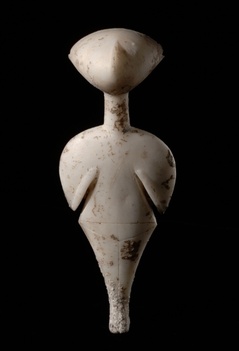I haven’t been to the State Hermitage Museum in St. Petersburg, Russia, by the way — one of the museums now available on Google. I will someday. But I couldn’t bear to experience it for the first time in this way. I didn’t fall in love with art — or museums — because of “zoom levels.”
That is David Franklin, director of the Cleveland Art Museum, speaking on the subject of the Google Art Project. (I actually have been to the Hermitage.)
 Given all the praise for GAP, I was a tad surprised to hear his views, which came out at the panel I moderated for International Museum Day at the Toledo Art Museum on May 18. As it happened, one audience member asked a question about the Google Art Project (the entire discussion about “Museums and Memory” has been posted on YouTube) and Franklin, a panelist, was quick to speak out against it.
Given all the praise for GAP, I was a tad surprised to hear his views, which came out at the panel I moderated for International Museum Day at the Toledo Art Museum on May 18. As it happened, one audience member asked a question about the Google Art Project (the entire discussion about “Museums and Memory” has been posted on YouTube) and Franklin, a panelist, was quick to speak out against it.
Until then, I went with the flow in favor: I rather think it’s fun to zoom in on the brush strokes and pigments in, say, Holbein’s The Merchant Georg Gisze at Berlin’s Gemaldegalerie, though I haven’t had the patience to use the technology that allows computer users to pan around galleries of each museum that are part of the GAP. (GAP’s creator, btw, has said he never intended the site to be a meta-museum, but that’s how some people are treating it.) I also thought it might draw people to visit museums, and that would obviously be a good thing.
But Franklin doesn’t think GAP is a good introduction to art. In Toledo, he mentioned that he had spoken about GAP at the recent TED conference in Cleveland, known as TEXxCLE. His talk is posted here, and I asked for and received a copy of his script (from which he says he diverted at times).
The quote above is from his talk, which begins with a slide of the Cleveland Museum’s Stargazer, a sculpture from what is now Turkey. It’s true the picture above does not do justice to this 5,000+ year-old object. Franklin showed his TED audience a slide, and then her, and said:
When you encounter the Stargazer in the museum, she looks as though she could have been sculpted yesterday. Translucent marble, clean lines, almost an interpretation of the human form that Picasso would have envied. 5,000 years ahead of its time, but embodying a gesture still timeless — a small human figure looking hopefully to the skies.
The Stargazer tells a story of human aspiration. Her place in the story stretches back into our prehistory. But she also holds a special place in a story that stretches forward. The story of why museums matter.
Museums matter because they create the space to behold, to circle, to covet, to engage with an object so small, and feel the continuity of something so large.
I really like that description.
Franklin goes on in his speech to elaborate on four reasons why technology can’t replace going to a museum, but should instead be used to better understand the originals, and says that art must be experienced, that viewing something online is hardly the same as experiencing it. I don’t think he would get much argument on those points from RCA readers.
The question, though, is whether viewing art on GAP makes one more or less likely to visit museums — and I suspect the answer is not a universal one. Sometimes it will, and sometimes it won’t. Not much downside in that.
But one final thought, now that GAP has been around a while and publicity has died down: I’d like to know if the initial attraction of GAP has continued. Are the hits still high at participating museums?
Photo Credit: Courtesy of the Cleveland Art Museum
